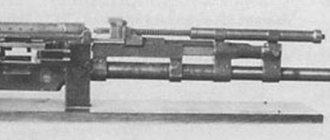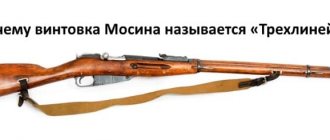Il-4 torpedo bomber
A deep modernization of the DB-3 with the installation of new M-88 engines (1100 hp), an elongated and more streamlined fuselage nose with a spindle-shaped outline with extensive glazing, a slight increase in the wing area while maintaining the same span led to the creation of the DB-3F. The lower firing mount was initially abandoned. A number of other changes were made, as well as the manufacturing technology was radically revised to meet the requirements of mass production. Work on the aircraft under the original designation TsKB-30F began in mid-1938. The prototype entered testing on May 21, 1939.
Due to the lack of development of the M-88 engine, the aircraft was transferred to state tests with M-87 engines, and some of the production aircraft were produced with such engines. Their production at factories No. 39 and No. 18 began at the end of 1939, at factory No. 126 - in the second quarter of 1941. The total production volume was 5256 aircraft. Moscow plant No. 39 stopped producing DB-3F at the beginning of 1941, Voronezh plant No. 18 delivered the last DB-3F in July 1941. Subsequently, the main manufacturer remained plant No. 126 in Komsomolsk-on-Amur, which delivered the last 4 cars to 1946. In addition, since February 1942, Moscow plant No. 81 assembled the Il-4 from components supplied from plant No. 126, and plant No. 23 (also in Moscow) first assembled aircraft (from May 1942), and then moved on to their full-fledged production, releasing them in 1942-1943. 367 cars. The total production volume was 5256 aircraft.
Background to the creation of IL-4 - modernization of DB series bombers
In the 1930s, Soviet aircraft designer V.S.
Ilyushin set out to combine the “incompatible”. He wanted to create a typical long-range bomber with improved speed characteristics. Why was this idea considered revolutionary then? At that time, the prevailing theory among aircraft designers was: “The aerodynamic properties of an aircraft depend entirely on the wing area - the larger the area, the further the aircraft flies, but the flight speed decreases.”
The photo shows the DB-2 bomber, which was designed under the motto “Range above all,” and therefore was poorly adapted for real combat use
The long-range bombers DB-2 and ANT-25, produced in the 1930s, could really fly far. However, the maximum speed of 350 km/h (and with a full bomb load no higher than 320 km/h) made the effectiveness of these bombers in combat conditions low. Primarily due to the rapid development of fighter aircraft.
The creation of fast and maneuverable fighters equipped with more effective weapons reduces the combat usefulness of low-speed bombers - they simply will not reach the target.
In 1934, having purchased from the French the licensing rights to produce the best aircraft engines at that time, the Gnome-Ron “Mistral Major” K-14, the Soviet aircraft industry could afford to take a step forward in development.
The appearance of good engines freed the hands of Soviet aircraft designers.
To begin with, Ilyushin decided to experiment with the Tupolev DB-2.
He proposed the concept of reducing the length of the wing, and he also proposed slightly changing the design of the profile, fuselage and making a number of other innovations, such as:
- the creation of pressurized compartments in the wings, which were used instead of fuel tanks that were attached to the wings or body of the aircraft;
- use of a fundamentally new bomb placement scheme. For the DB-2, bombs were attached to the side walls of the bomb compartment, and for the DB-3 a special central frame was developed - thanks to the innovation, the combat load and bombing accuracy increased;
- special holders for hanging bombs of 500 or 1000 kg were installed on the axial and side ribs, allowing, if necessary, to increase the maximum load to 2.5 tons of bombs;
- and others.
Thanks to this, Ilyushin managed to increase the speed of the new modification of the DB series bombers to 395 km/h with a full standard bomb load.
Soviet DB-3
Already in the DB-3, the main directions of the aircraft designer’s idea of creating a relatively light twin-engine monoplane, with increased aerodynamic performance and a carrying capacity sufficient to use the monoplane as an effective bomber, were actually implemented.
Neighbor turned distant
DB-3 became the first aircraft of aircraft designer Sergei Ilyushin. Although he had the Air Force Academy behind him. Zhukovsky and his diploma work on the development of a fighter, he did not really take up design work right away. Seven years passed before Ilyushin was allowed to create his own design team within the Central Design Bureau (TsKB) of the Moscow aircraft plant No. 39 named after Menzhinsky.
Each brigade within the Central Design Bureau dealt with specific types of aircraft, weapons, equipment, or testing. “Troika” fell to develop a high-speed short-range bomber - the same one that Andrei Tupolev’s design bureau was working on. But when the Ilyushin BB-2 aircraft as a whole had already been developed and the construction of the first prototype had already begun, it turned out that the Red Army already had a high-speed bomber: the Tupolev SB. It was a pity to lose the developments, especially since the aircraft designed by Ilyushin’s team differed favorably from the SB in its potential flight range. And then the designer took the risk of offering his car as a new long-range bomber - besides, such a one was included in the secondary plans of the design bureau.
In the minds of most aircraft designers of that time, aircraft of this type were distinguished by a large wingspan and a long flight range, achieved due to low speed: slow engines burned less fuel. The M-25 engines, which, according to the technical specifications, had to be installed on the BB-2, gave the vehicle a much higher speed. And at the same time, the new aircraft, according to all calculations, received a flight range sufficient to be declared a long-range bomber. The unusual concept could prevent the adoption of such an aircraft into service, especially since it was competing with another Tupolev aircraft - the DB-2, also known as ANT-37. It was a classic long-range bomber, with a long wing, low speed and poor maneuverability. As a result, although it had a shorter range, Sergei Ilyushin’s vehicle, which was much faster and more maneuverable, was much more to the liking of the military. They understood that fighters were becoming faster and faster, which meant that bombers should not lag far behind them.
Creation of DB-3F
In 1938, a full-scale modernization of the DB-3 began, which led to the creation of the DB-3F aircraft, which in March 1942 began to be called Il-4.
There is no point in describing in a review article the numerous technical changes made by Ilyushin to the “basic” DB-3.
When developing the DB-3F, the designers made more than 8,000 drawings.
Modernization and improvement affected almost everything - from the use of a new 1100-horsepower M-88 engine (improved in the Zaporozhye Design Bureau of the Mistral Major K-14 engine) to the introduction of major changes in the design and manufacturing technology of individual airframe elements.
It cannot be said that the process of creating the DB-3F went smoothly - at every stage technical shortcomings were discovered, which they tried to eliminate in an emergency.
It should be noted right away that the combat vehicle that was fully created and became famous during the Great Patriotic War did not live up to the requirements that were set before the Ilyushin Design Bureau:
- speed 500-550 km/h,
- ceiling 10-12 km
- hitting a target at a distance of 5000 km from the take-off site.
There were times when the project could have been closed and the leading designers and engineers arrested. But no one could offer better performance characteristics of the bomber than those that Ilyushin managed to achieve.
The designers were left alone - after all, the characteristics of the DB-3F were much better than those that existed before.
It must be admitted that Ilyushin accomplished his strategic task after all. By the beginning of the war, the DB-3F (IL-4) was the most combat-ready combat vehicle among the classic bombers of the Soviet Union.
Heroes of the Soviet Union who fought on the Il-4[ | ]
IL-4 (1942)
| Years of life | Combat sorties | |
| Aleynikov, Sergey Petrovich | 1909-1983 | 240 |
| Alekhnovich, Anton Adamovich | 1914-1979 | 205 |
| Andreev, Ivan Fedorovich | 1910-1992 | — |
| Barashev, Dmitry Ivanovich | 1920-1943 | 181 |
| Borisov, Vasily Alexandrovich | 1913-1993 | 284 |
| Borisov, Vladimir Ivanovich | 1918-1974 | 302 |
| Vasiliev, Vasily Vasilievich | 1915-1943 | 201 |
| Vyazovsky, Vladimir Andreevich | 1920-2005 | 263 |
| Garanin, Alexey Dmitrievich | 1921-1943 | 400 |
| Gastello, Nikolai Frantsevich | 1908-1941 | 3 |
| Grechishkin, Vasily Nikolaevich | 1911-1943 | 152 |
| Groshev, Leonid Petrovich | 1914-1986 | 226 |
| Danschin, Sergei Petrovich | 1911-1943 | 201 |
| Zakharov, Sergei Ivanovich | 1918-2007 | 251 |
| Kot Alexey Nikolaevich | 1914-1997 | 293 |
| Krasnukhin, Alexander Mikhailovich | 1908-1982 | 248 |
| Kretov, Stepan Ivanovich | 1919-1975 | 400 |
| Kulikov Sergey Ivanovich | 1913-1953 | — |
| Levchuk, Semyon Lukyanovich | 1918-2005 | 221 |
| Minakov, Vasily Ivanovich | 1921-2016 | 206 |
| Molodchiy, Alexander Ignatievich | 1920-2002 | 311 |
| Nesmashny, Grigory Ivanovich | 1914-1990 | — |
| Osipov, Vasily Nikolaevich | 1917-1991 | 420 |
| Parakhin, Efim Danilovich | 1913-1997 | — |
| Parashchenko, Feodosius Karpovich | 1919-1978 | 388 |
| Polezhaev, Semyon Antonovich | 1918-1982 | 224 |
| Prokudin, Alexey Nikolaevich | 1915-1989 | 364 |
| Radchuk, Pavel Petrovich | 1909-1943 | — |
| Reshetnikov, Vasily Vasilievich | 1919- | 307 |
| Romanov, Pyotr Ivanovich | 1918-1945 | 209 |
| Roshchenko Vladimir Fedorovich | 1921-1990 | — |
| Rubtsov, Anatoly Petrovich | 1914-1954 | 886 |
| Simakov, Ivan Nikolaevich | 1906-1953 | 299 |
| Simonov Mikhail Vasilievich | 1913-2004 | 278 |
| Sitnov Valentin Egorovich | 1918-1945 | 150 |
| Tikhomolov, Boris Ermilovich[1] | 1913-1991 | 212 |
| Tikhonov, Vasily Gavrilovich | 1909-1976 | — |
| Khrustalev, Pavel Pavlovich | 1917-1975 | — |
| Chernienko Georgy Georgievich | 1907-1977 | 155 |
| Chumachenko, Dmitry Vasilievich | 1909-1948 | 326 |
| Chumachenko, Dmitry Vasilievich | 1909-1948 | 326 |
| Shvets, Stepan Ivanovich | 1905-1998 | 267 |
| Shchelkunov, Vasily Ivanovich | 1910-1974 | — |
Flight characteristics of the bomber
| Crew | 4 people (crew commander - also pilot-pilot; navigator-gunner; radio operator-gunner; gunner); |
| Aircraft length | 14.76 m; |
| Height | 4.1 m; |
| Wing span and area | 21.44 m and 66.7 m2; |
| weight: empty/standard combat/maximum combat | 5800/10055/12120 kg; |
| Motors used | M-88B with a power of 1100 hp; |
| Maximum climb speed | 4.4 m/s; |
| Maximum flight speed at ground/altitude | 332/430 km/h; |
| High ceiling | 8.9 km; |
| Maximum combat range | 4000 km; |
| Combat load standard/maximum | 1000/2500 kg of bombs (a 1,940-kilogram 45-36-AN/AV torpedo was attached to the Navy aircraft); |
| Armament for defense against enemy fighters | 3 machine guns (12.7 mm UBT + two 7.62 mm ShKAS) |
Notes[ | ]
- For Air Force Day (unspecified)
. ko-dnu-vvs.mil.ru. Access date: August 12, 2022. - aviaru.rf Torpedo bomber DB-3T. — Russian aviation
- aviaru.rf Torpedo bomber DB-3T (DB-3TP)
- https://www.airwar.ru Ilyushin TsKB-54
- armedman.ru Long-range bomber Il-4 (USSR) Military encyclopedia
- ↑ 12
armedman.ru Long-range bomber Il-4 (USSR). Military encyclopedia. - Simonov K. Different days of the war. Writer's Diary. M.: Fiction, 1982. (Chapter 2)
- Evgeny Stasenko.
212 Long-Range Bomber Aviation Regiment.
Unit card (undefined)
.
Victory 1945
. - Decree of the President of the Russian Federation dated May 2, 1996 No. 635
Main serial modifications
- standard serial DB-3F (1939-1940 production) - with an M-88 engine, crew of 3 people.
- serial DB-3B (1941 release). More advanced M-88B engines were installed, and a second gunner appeared in the crew.
- serial DB-3T (IL-4T) - torpedo bomber of the Navy Air Force. This model had outboard holders for torpedoes and sea mines. It was used for long-range maritime reconnaissance, laying minefields or attacking enemy military and transport ships, and bombing enemy ports.
- IL-4TK. This model (developed in 1943) can hardly be called serial. However, the Il-4TK high-altitude reconnaissance aircraft, equipped in the tail section with special photographic equipment, still played a role in the development of many offensive operations.
Monuments[ | ]
| Type of monument | Location | Inscriptions | Photo |
| Airplane monument | Severomorsk (Murmansk region) | photo | |
| Memorial sign at the site of the plane crash | Sevastopol, st. Suvorov | Here, on September 26, 1943, the crew of the Il-4 aircraft of the 5th Guards Mine and Torpedo Aviation Regiment of the Black Sea Fleet Air Force died while performing a combat mission. Guard Art. Lieutenant Nadezhdin V.A., Guard Sergeant Major Pravdivy I.F., Guard Sergeant Borisov A.P. | photo |
Combat use of IL-4
The very name “long-range bomber” speaks eloquently about the main combat purpose of the aircraft - carrying out bombing strikes deep behind enemy lines (destruction of troop concentrations, large warehouses, industrial facilities of military importance, etc.).
However, the events of the first days of the Great Patriotic War made “adjustments” to the plans of the Soviet command on the use of DB-3F bombers.
In the first days, the Germans managed to almost completely destroy all Soviet close combat aviation concentrated on the western borders of the USSR. It was decided to use the DB-3F as a regular “close combat” bomber.
Instead of bombing behind enemy lines, long-range bombers were sent to bomb large mechanized columns, which in some places advanced unhindered deep into Soviet territory.
Loading ammunition for a 12.7 mm UBT machine gun
In principle, long-range aviation performed an unusual combat mission in the summer of 1941 “excellently” - the German advance was much slower not only because of the fierce resistance of the ground units of the Soviet troops, but also thanks to the actions of the Soviet “long-range” bomber aviation.
True, this task was accomplished at a high price - operating practically without fighter cover, and even at low altitudes (for the most accurate bombing strike it was necessary to carry it out from a height of no more than 400 meters), the long-range aviation squadrons suffered heavy losses.
However, it was not possible without carrying out missions of particular importance deep behind enemy lines - starting in August 1941, DB-3F (IL-4) regularly bombed the industrial areas of Berlin (!!!).
DB-3F (IL-4) were also used at sea.
Torpedo suspension on IL-4
The Baltic Fleet Air Force was armed with specially developed modifications of long-range bombers as torpedo bombers to destroy enemy warships and large transports far from the coast.
Beginning in the summer of 1942, when the aviation industry was already actively working and began regularly supplying the front with sufficient quantities of close combat aircraft, DB-3F (IL-4) bombers began to be used only for their direct combat purpose.
And again statistics
A total of 6,785 DB-3 long-range bombers were built, including all modifications.
Despite the large number of aircraft built, not a single one of them has survived to this day in working condition. All examples, stored in aviation museums or erected on pedestals, were collected and restored from the wreckage of cars from the time of the Patriotic War, found by volunteer searchers. During the hostilities, Soviet aviation lost more than 10,000 bomber aircraft, including the DB-3 and Il-4. In total, during the war years, more than 220,000 combat missions were carried out on long-range bomber aircraft.
The main advantages and disadvantages of bombers
The main advantages of the DB-3F (Il-4) aircraft include:
- the relatively insignificant, compared to other aircraft models, time for complete assembly of a bomber at the manufacturing plant - during times of acute shortage of aircraft, especially 1941-1942, this moment was of enormous importance;
- a sufficiently large bomb load and possible strike range;
- increasing the speed to 400 km/h increased the maneuverability of the aircraft.
As for the shortcomings, of course there were some (the model was actually created in a hurry), but almost all of them brought more problems to the maintenance of the aircraft than to their combat use.
But among the “combat” shortcomings it should be noted:
- lack of autopilot. The fact is that the design features required constantly holding the steering wheel (if you let go of the steering wheel, the plane would immediately throw up or down). During a long, monotonous flight, this exhausted the pilots physically and psychologically. Among the “non-combat” losses, there are many cases when a tired pilot simply lost concentration or even fell asleep at the controls, which led to the crash of the combat vehicle;
- "capriciousness" of the aircraft during landing and takeoff. Any mistake or relaxation of the pilot could lead to tragedy;
- rather weak defensive weapons. The long-range bomber often needed to carry out combat missions deep behind enemy lines without the cover of its fighters.
"Dead loop" over Red Square
In August 1935, the aircraft, which had the code TsKB-26, was shown to the People's Commissar of Defense Marshal Klim Voroshilov and the People's Commissar of Heavy Industry Sergo Ordzhonikidze. They approved the car and set Ilyushin the task of turning it into a real long-range bomber by next year. The new version received the index TsKB-30 and was already completely metal (the predecessor had an all-wood fuselage). To ensure a balance between high speed and long range, it was decided to reduce the aerodynamic drag of the aircraft as much as possible. For this purpose, a thin wing profile was chosen, and the fuselage was made as narrow as possible due to the fact that the bomb racks were placed not along the sides, but along the axis of the aircraft. In addition to this, the skin of the new car was made as smooth as possible, and the chassis was retractable.
TsKB-30 took off on its first flight on March 31, 1936, and was already shown to the general public at the May Day parade. That evening, it was inspected by Soviet leaders, including Joseph Stalin. For the distinguished guests, test pilot Vladimir Kokkinaki demonstrated all the maneuverable capabilities of the aircraft, including the “dead loop” - a feature inaccessible to other Soviet bombers. This finally decided the fate of the aircraft, which it was decided to urgently prepare for state tests. They began in June and ended in early September, after which the new bomber was adopted by the Soviet Air Force.
To prove the capabilities of his aircraft, Sergei Ilyushin did the same as other aircraft designers of that time - he built two “record” versions of the new aircraft, “Moskva” and “Ukraine”. On the first, the crew under the command of Vladimir Kokkinaki made a 7,580-kilometer flight from Moscow to Spassk-Dalniy on June 27-28, 1938. And on April 28, 1939, “Moskva” made an 8,000 km flight from Moscow to North America in less than a day along the so-called “great circle arc” (this is how transatlantic flights still fly today). This was the last ultra-long-distance flight in the pre-war USSR. And “Ukraine” had the honor of making the last women’s record flight in the Soviet Union: on July 27, 1940, Maria Nesterenko’s crew covered almost 7,000 km from Khabarovsk to Lvov.











